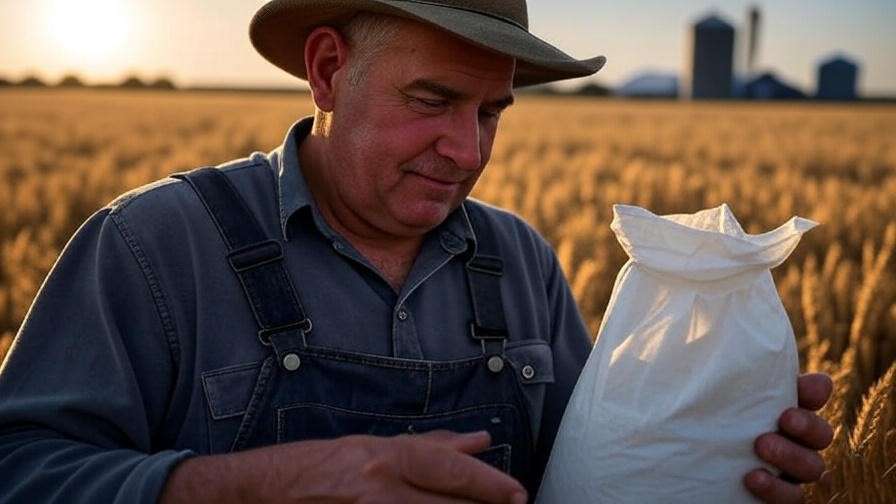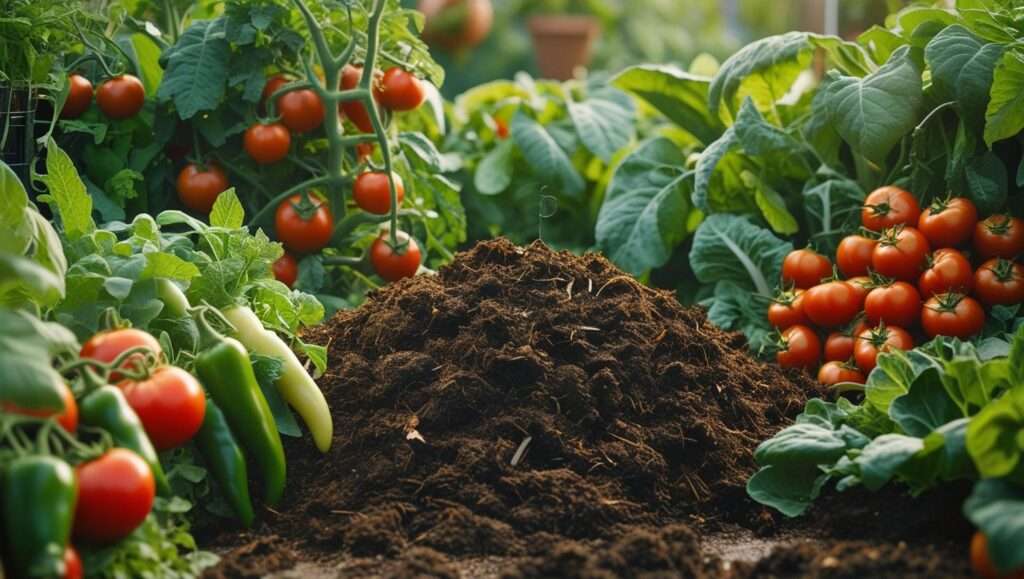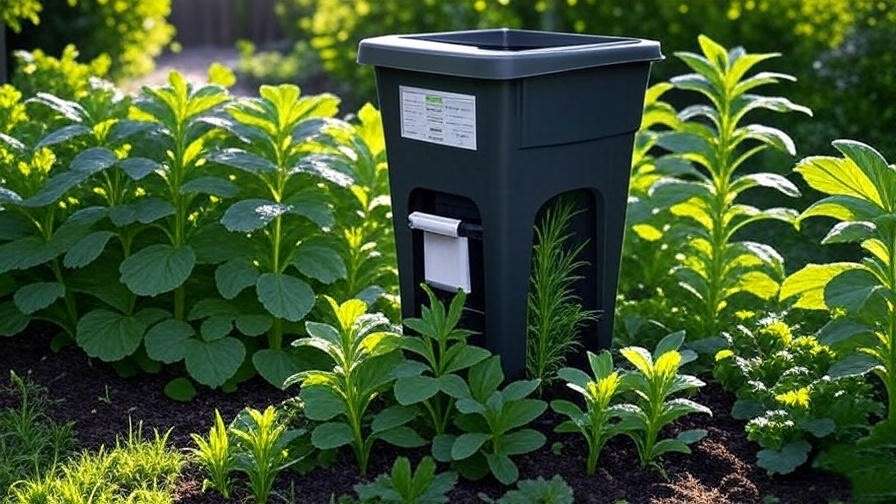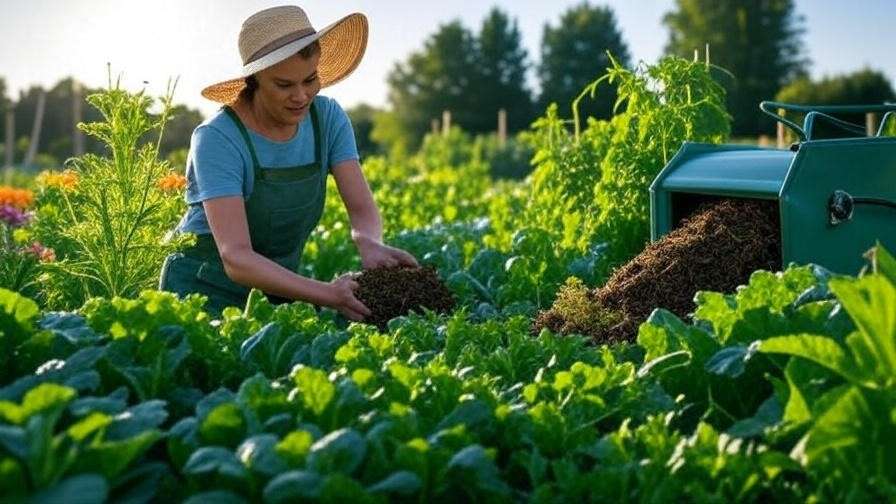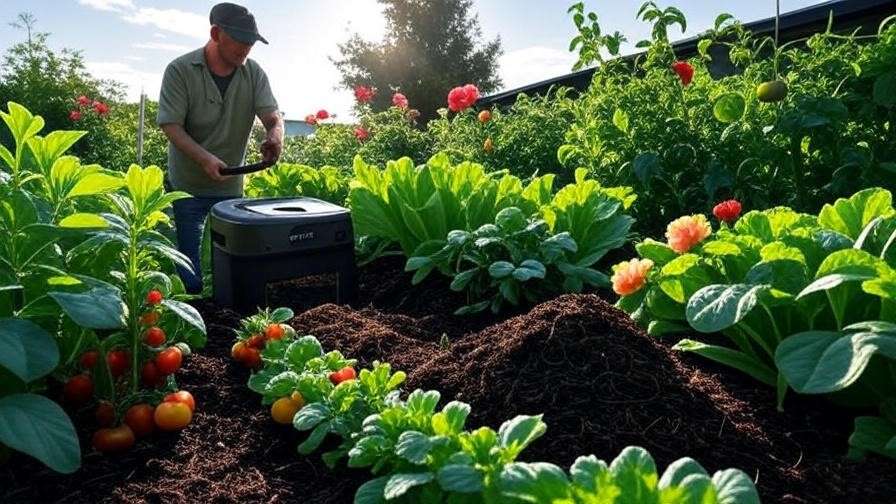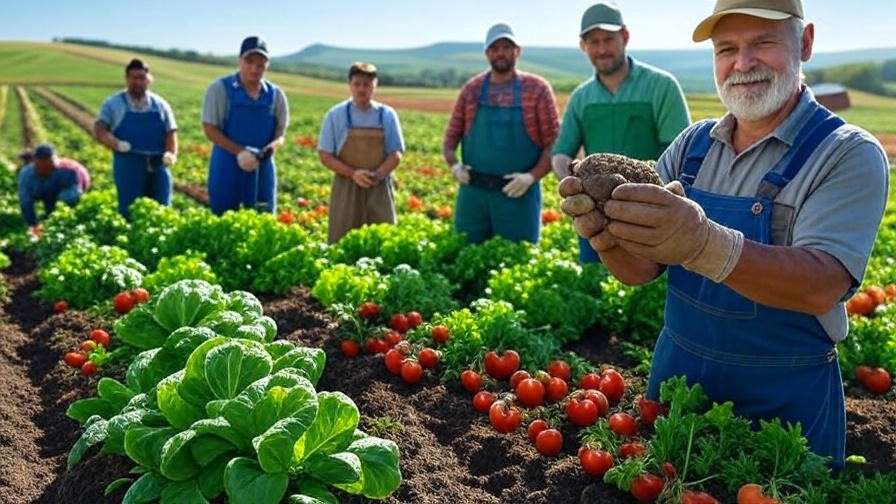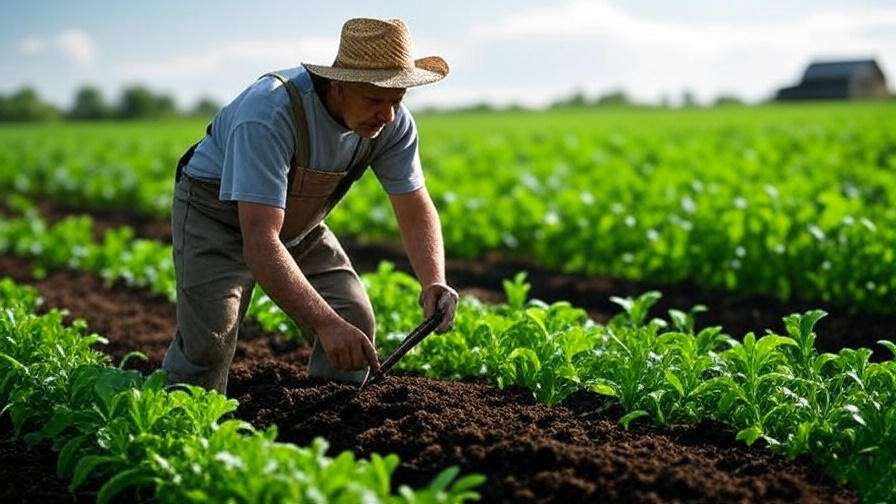Imagine losing nearly half of your fertilizer investment to thin air or nearby waterways before your crops can even use it. Studies estimate that up to 50% of traditional nitrogen fertilizers are lost to leaching or volatilization, costing farmers millions annually while harming the environment. Enter slow release nitrogen fertilizer—a revolutionary solution that delivers nutrients steadily, maximizing crop growth and minimizing waste. In this comprehensive guide, we’ll explore how slow release nitrogen fertilizers can transform your farming operation, boost yields, reduce costs, and support sustainable agriculture. From practical application tips to real-world success stories, this article equips farmers with the knowledge to harness this game-changing technology effectively.
What Is Slow Release Nitrogen Fertilizer?
Understanding Nitrogen in Agriculture
Nitrogen is the backbone of plant growth, fueling photosynthesis, protein synthesis, and overall crop vigor. It’s a critical nutrient for high-yield crops like corn, wheat, and vegetables. However, traditional nitrogen fertilizers, such as urea or ammonium nitrate, often release nutrients too quickly. This leads to significant losses through leaching (where nutrients wash away in rain) or volatilization (where nitrogen escapes as gas). These inefficiencies not only reduce crop yields but also contribute to environmental issues like water pollution and greenhouse gas emissions.
Defining Slow Release Nitrogen Fertilizer
Slow release nitrogen fertilizers (SRNFs) are designed to deliver nitrogen gradually over weeks or months, aligning with a plant’s growth cycle. Unlike conventional fertilizers, SRNFs use advanced technologies like polymer coatings, chemical stabilizers, or organic compounds to control nutrient release. Common types include:
- Coated fertilizers: Granules encased in sulfur or polymer to slow nitrogen release.
- Stabilized nitrogen: Treated with inhibitors to reduce microbial breakdown.
- Organic-based SRNFs: Derived from natural materials like composted manure or bio-based polymers.
This controlled release ensures crops receive a steady nutrient supply, reducing waste and environmental impact.
Why SRNFs Are Gaining Popularity
The rise of SRNFs reflects a broader shift toward sustainable farming. Farmers face increasing pressure to optimize resources while meeting stricter environmental regulations. According to Dr. Sarah Thompson, an agronomist at Purdue University, “Slow release nitrogen fertilizers are a win-win, improving nutrient efficiency while addressing ecological concerns.” Research from the USDA shows SRNFs can reduce nitrogen losses by up to 40%, making them a go-to choice for forward-thinking farmers. Their growing adoption is also driven by cost savings, as fewer applications are needed, and long-term soil health benefits.
Top Benefits of Using Slow Release Nitrogen Fertilizer
Enhanced Crop Yields and Quality
By providing a consistent nitrogen supply, SRNFs promote stronger, healthier plants. Studies, such as one from Iowa State University, demonstrate that SRNFs can increase corn yields by 10-20% compared to traditional fertilizers. This is because crops absorb nutrients more efficiently, avoiding the “boom-and-bust” cycle of rapid nutrient spikes and deficiencies. SRNFs also improve crop quality—think larger, more uniform vegetables or grains with higher protein content—directly impacting farm profitability.
Reduced Environmental Impact
SRNFs significantly reduce nutrient runoff, a major cause of water pollution. When traditional fertilizers wash into rivers and lakes, they trigger algal blooms and eutrophication, harming aquatic ecosystems. SRNFs, with their controlled release, minimize these risks. They also lower greenhouse gas emissions, particularly nitrous oxide, a potent contributor to climate change. A 2023 study in Agricultural Systems found that SRNFs cut nitrous oxide emissions by up to 30% compared to conventional options.
Cost Efficiency for Farmers
While SRNFs may have a higher upfront cost, their long-term savings are substantial. Fewer applications mean reduced labor, fuel, and equipment costs. For example, a single SRNF application can replace multiple rounds of traditional fertilizer, saving time and resources. Additionally, by reducing nutrient waste, farmers maximize their fertilizer investment. A case study from a Nebraska farm showed a 15% reduction in fertilizer costs after switching to SRNFs, with no compromise on yield.
Improved Soil Health

Overuse of traditional fertilizers can lead to soil nutrient imbalances and reduced microbial activity. SRNFs, by contrast, deliver nitrogen gradually, preventing soil overload and fostering a healthier soil ecosystem. This promotes beneficial microbes that enhance nutrient cycling and soil structure. Farmers using SRNFs often report improved soil fertility over time, laying the foundation for sustainable crop production.
How Slow Release Nitrogen Fertilizers Work
The Science Behind Controlled Release
SRNFs rely on innovative technologies to regulate nitrogen release. Polymer-coated fertilizers, for instance, use semi-permeable membranes that allow water to enter, dissolving the nitrogen inside, which then diffuses slowly into the soil. Stabilized nitrogen fertilizers incorporate inhibitors like nitrapyrin to slow microbial conversion of nitrogen into forms prone to loss. Organic-based SRNFs, such as those derived from composted materials, release nitrogen as they decompose naturally. These mechanisms ensure nutrients are available when crops need them most, typically over 6-12 weeks.
Factors Influencing Performance
The effectiveness of SRNFs depends on several factors:
- Soil pH: Neutral to slightly acidic soils (pH 6-7) optimize nutrient release.
- Temperature: Warmer soils accelerate release, while cooler conditions slow it down.
- Moisture: Adequate water is needed to activate coated fertilizers.
- Microbial activity: Organic SRNFs rely on soil microbes for decomposition.
| Soil Type | SRNF Performance |
|---|---|
| Sandy | Moderate; requires careful moisture management |
| Clay | High; retains nutrients effectively |
| Loamy | Optimal; balances moisture and nutrient retention |
Compatibility with Different Crops
SRNFs are versatile, benefiting a wide range of crops, including corn, wheat, soybeans, vegetables, and fruit orchards. High-nitrogen-demand crops like corn and leafy greens see the most significant gains. For example, a California vineyard reported a 12% increase in grape yield after adopting polymer-coated SRNFs, citing better nutrient timing during critical growth stages.
Practical Application Tips for Farmers

Choosing the Right SRNF Product
Selecting the right SRNF depends on your crop, soil, and budget. Consider these factors:
- Release duration: Choose products with release periods (e.g., 2-6 months) that match your crop’s growth cycle.
- Nutrient composition: Ensure the fertilizer includes other essential nutrients like phosphorus or potassium if needed.
- Cost vs. benefit: Compare upfront costs with long-term savings from fewer applications.
Conduct a soil test to determine nitrogen levels and consult with your local agricultural extension service for product recommendations.
Best Practices for Application
To maximize SRNF benefits:
- Apply at planting or early growth: Ensure nutrients are available during peak demand.
- Use precision tools: Employ variable rate applicators or soil sensors to target application.
- Incorporate into soil: Place SRNFs near the root zone for optimal uptake.
- Monitor weather: Avoid applying before heavy rain to prevent premature release.
Integrating SRNFs with precision agriculture technologies can further enhance efficiency, allowing farmers to tailor applications to specific field zones.
Timing and Seasonal Considerations
Timing is critical for SRNF success. For spring-planted crops like corn, apply SRNFs at planting to support early growth. For perennial crops like orchards, apply in early spring or post-harvest to build nutrient reserves. In warmer climates, split applications may be needed to account for faster release rates. Below is a sample seasonal calendar for SRNF application:
| Month | Crop | Action |
|---|---|---|
| March | Corn | Apply at planting |
| May | Vegetables | Side-dress during vegetative growth |
| October | Orchards | Post-harvest application |
Common Mistakes to Avoid
- Over-application: Excess SRNFs can still lead to nutrient buildup; follow soil test recommendations.
- Improper storage: Store SRNFs in cool, dry conditions to preserve coatings.
- Ignoring soil tests: Without baseline data, you risk under- or over-fertilizing.
- Neglecting calibration: Ensure equipment is calibrated for precise application rates.
Quick Tip: Always start with a small trial plot to test SRNF performance on your farm before full adoption.
Comparing Slow Release Nitrogen Fertilizers to Traditional Fertilizers

Efficiency and Performance
Slow release nitrogen fertilizers (SRNFs) outperform traditional fertilizers in nutrient delivery efficiency. While conventional fertilizers like urea release nitrogen rapidly—often within days—SRNFs provide a steady supply over weeks or months. This matches the crop’s nutrient uptake patterns, reducing losses to leaching or volatilization. A 2024 study from the University of Illinois found that SRNFs improved nitrogen use efficiency (NUE) by up to 35% compared to traditional options. For farmers, this translates to healthier crops with less fertilizer waste, ensuring more nitrogen reaches the plant roots where it’s needed most.
| Aspect | SRNFs | Traditional Fertilizers |
|---|---|---|
| Release Rate | Gradual (2-6 months) | Rapid (days to weeks) |
| Nitrogen Use Efficiency | 70-85% | 40-60% |
| Application Frequency | 1-2 times per season | 3-4 times per season |
| Environmental Impact | Low (minimal runoff, emissions) | High (significant runoff, emissions) |
Cost-Benefit Analysis
While SRNFs often have a higher upfront cost—sometimes 20-30% more than traditional fertilizers—their long-term savings are compelling. Fewer applications reduce labor and equipment expenses, and higher nutrient efficiency means less product is needed overall. For instance, a 200-acre soybean farm in Iowa reported a 12% reduction in total fertilizer costs after switching to SRNFs, despite the initial price premium. The return on investment (ROI) becomes evident within one to two growing seasons, especially for high-value crops like vegetables or fruits.
To illustrate, consider a corn farm spending $10,000 annually on traditional nitrogen fertilizers. By switching to SRNFs, the farm could reduce application frequency from three to one, cutting labor and fuel costs by $2,000 and fertilizer waste by 20%, saving an additional $1,500. Over five years, these savings compound significantly, making SRNFs a smart financial choice.
Environmental and Regulatory Considerations
SRNFs align with modern environmental regulations, such as the U.S. EPA’s Clean Water Act guidelines, which aim to reduce nutrient pollution in waterways. By minimizing runoff, SRNFs help farmers comply with these standards while avoiding fines. Additionally, programs like the USDA’s Conservation Stewardship Program offer incentives for adopting sustainable practices, including SRNFs. In contrast, traditional fertilizers contribute to environmental challenges, making them less viable as regulations tighten. Farmers using SRNFs also gain a competitive edge by marketing their crops as sustainably grown, appealing to eco-conscious consumers.
Expert Insights and Real-World Success Stories
What Agronomists Say About SRNFs
Agronomists widely endorse SRNFs for their precision and sustainability. Dr. Michael Carter, a soil scientist at Texas A&M University, notes, “Slow release nitrogen fertilizers allow farmers to achieve higher yields with less environmental footprint, a critical balance in modern agriculture.” Research from peer-reviewed journals, such as Soil Science Society of America Journal, confirms that SRNFs enhance soil nutrient retention, supporting long-term productivity. These expert endorsements underscore the reliability and scientific backing of SRNFs.
Case Studies of SRNF Success

- Midwest Corn Farm (Illinois): A 500-acre corn operation switched to polymer-coated SRNFs in 2023. By reducing nitrogen applications from three to one per season, the farm saved $15,000 annually in labor and fertilizer costs while increasing yields by 18%. Soil tests showed improved nitrogen retention, reducing runoff into nearby streams.
- California Vineyard: A Napa Valley vineyard adopted organic-based SRNFs for its grapevines. The result was a 12% yield increase and better grape quality, leading to a 10% premium on wine sales. The vineyard also earned a sustainability certification, boosting its market appeal.
- Vegetable Farm (Florida): A small-scale vegetable grower used SRNFs for tomatoes and peppers, cutting fertilizer use by 25% and improving crop uniformity. The farm reported a 15% increase in marketable produce, directly impacting profitability.
Farmer Testimonials
- John M., Iowa Farmer: “Switching to slow release nitrogen fertilizer was a game-changer. I’m saving time and money, and my corn has never looked better.”
- Maria S., California Grower: “SRNFs gave my vineyard a competitive edge. The grapes are higher quality, and I’m proud to farm sustainably.”
Challenges and Limitations of Slow Release Nitrogen Fertilizers
Upfront Costs and Accessibility
The primary barrier to SRNF adoption is their higher initial cost, which can deter small-scale farmers. A 50-pound bag of polymer-coated SRNF may cost $40 compared to $30 for traditional urea. However, bulk purchasing or cooperative buying can offset this. Additionally, government subsidies, such as those offered through USDA’s Natural Resources Conservation Service, can help cover initial expenses. Farmers should weigh these costs against long-term savings and yield gains.
Soil and Climate Dependencies
SRNF performance varies with soil and climate conditions. In sandy soils with high drainage, coated fertilizers may release nutrients too quickly if not properly managed. In contrast, clay soils retain nutrients well, maximizing SRNF benefits. Extreme weather, like heavy rainfall or drought, can also affect release rates. Farmers in wet climates should use SRNFs with longer release periods, while those in arid regions may need supplemental irrigation to activate the fertilizer. Soil testing and local extension services can guide adjustments.
Knowledge Gaps and Misconceptions
Some farmers hesitate to adopt SRNFs due to misconceptions, such as believing they’re too complex or only suitable for large operations. In reality, SRNFs are scalable and user-friendly, with products designed for both small and large farms. Another myth is that SRNFs are less effective than traditional fertilizers. Research consistently shows comparable or superior yields with proper application. Education through workshops or extension programs can bridge these knowledge gaps, empowering farmers to use SRNFs confidently.
The Future of Slow Release Nitrogen Fertilizers

Innovations in SRNF Technology
The future of SRNFs is bright, with innovations like nanotechnology and biodegradable coatings on the horizon. Researchers are developing “smart” fertilizers that adjust release rates based on soil moisture or temperature, further optimizing nutrient delivery. For example, a 2025 trial at Cornell University tested a nano-coated SRNF that increased wheat yields by 22% while reducing nitrogen use by 30%. These advancements promise even greater efficiency and sustainability.
Role in Sustainable Agriculture
SRNFs are a cornerstone of sustainable farming, aligning with global initiatives like the UN’s Sustainable Development Goals (e.g., Zero Hunger, Clean Water). By reducing nutrient runoff and emissions, SRNFs support carbon-neutral agriculture and food security. The 4R Nutrient Stewardship framework—Right Source, Right Rate, Right Time, Right Place—emphasizes SRNFs as a key strategy for responsible nutrient management. Farmers adopting SRNFs contribute to these broader goals while enhancing their own operations.
How Farmers Can Stay Ahead
To leverage SRNFs effectively, farmers should:
- Stay informed: Subscribe to agricultural journals or follow extension services for updates on SRNF innovations.
- Adopt precision agriculture: Use soil sensors, drones, or variable rate applicators to optimize SRNF use.
- Network with peers: Join farmer cooperatives or attend workshops to share SRNF experiences and best practices.
Resources like the USDA’s Extension Service or trade publications such as Progressive Farmer offer valuable insights for staying ahead.
Frequently Asked Questions (FAQs)
- How long does a slow release nitrogen fertilizer last in the soil?
Depending on the product and conditions, SRNFs release nutrients over 2-6 months, with some lasting up to 12 months. Check product labels for specific durations. - Are SRNFs safe for organic farming?
Organic-based SRNFs, like those derived from composted manure, are certified for organic use. Always verify certification with your local organic standards body. - Can SRNFs be used with other fertilizers?
Yes, SRNFs can complement phosphorus or potassium fertilizers. Avoid mixing with fast-release nitrogen to prevent nutrient overload. - What’s the best SRNF for corn?
Polymer-coated urea with a 3-4 month release period is ideal for corn, ensuring nutrients align with peak growth stages. Consult soil tests for precise recommendations. - How do I know if my soil needs SRNFs?
Conduct a soil test to assess nitrogen levels and drainage. If nutrient loss or inconsistent yields are issues, SRNFs may be a good fit.
Conclusion
Slow release nitrogen fertilizers offer a powerful solution for farmers seeking to boost crop yields, cut costs, and farm sustainably. By delivering nutrients efficiently, SRNFs reduce waste, protect the environment, and improve soil health, all while aligning with modern regulations and consumer demands for sustainable agriculture. Start by conducting a soil test, experimenting with SRNFs on a small plot, and consulting with agronomists to optimize results. Embracing this innovative technology not only enhances your farm’s profitability but also contributes to a healthier planet, ensuring a thriving future for agriculture.

